Why Google Favors Responsive Design for SEO

Last Updated on June 28, 2024 by Rick Rys
Page Contents
Google’s focus is on its mobile-friendly website visitors – mobile is now the primary entry to the web, and Google has a separate search index for mobile. Responsive website design is a ranking factor in Google search engine result pages along with several SEO benefits.
What is Responsive Website Design?
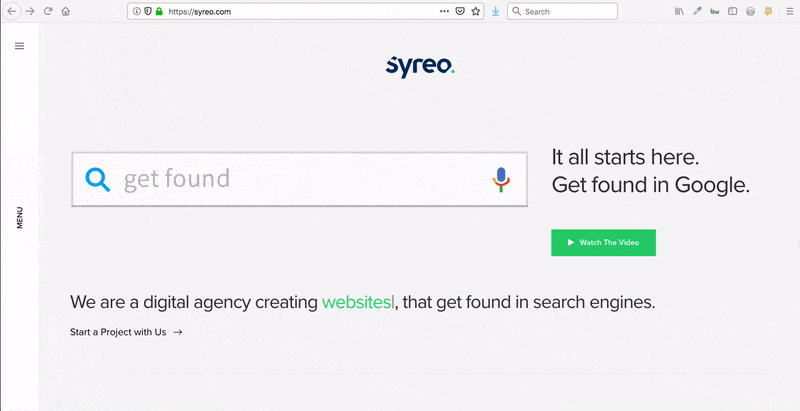
Responsive web design is a setup where the webserver always sends the same HTML code to all devices, and CSS is used to alter the rendering of the page on multiple devices.
Google’s algorithms should be able to automatically detect this setup if all Googlebot user agents are allowed to crawl the page and its assets (CSS, JavaScript, and images).
Google Search Is Focused On Responsive Website Design and SEO
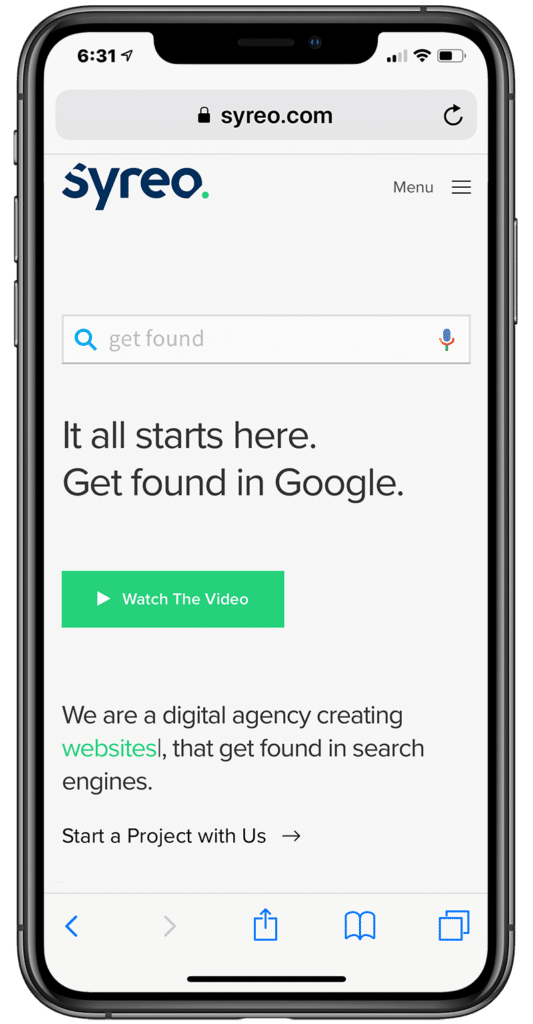
In response to the rising growth of mobile, Google has shifted its business focus to the display screen in your pocket (smartphone), or handbag (tablet), a lot more than the one on your desktop.
As a result, Google now contains two search indexes. One for mobile devices and another search index for desktop computers.
Google search favors mobile indexing first, so build your website with responsive design.
Googlebot will only crawl and index the mobile version of a webpage. If your website is not responsive design, Google will index the page “as-is.”
Having a responsive website design is paramount to your marketing plan. It’s also the new standard in a successful SEO – search engine optimization strategy.
While consumers are addicted to their mobile devices, mobile web searches on Google will continue to skyrocket.
There is more web search conducted on mobile devices than desktop web browsers. Google needs to ensure that all users find the content they’re looking for on their mobile device.
Google search is committed to delivering the best user experience for web searchers from all devices.
Responsive Design Improves Site User Experience
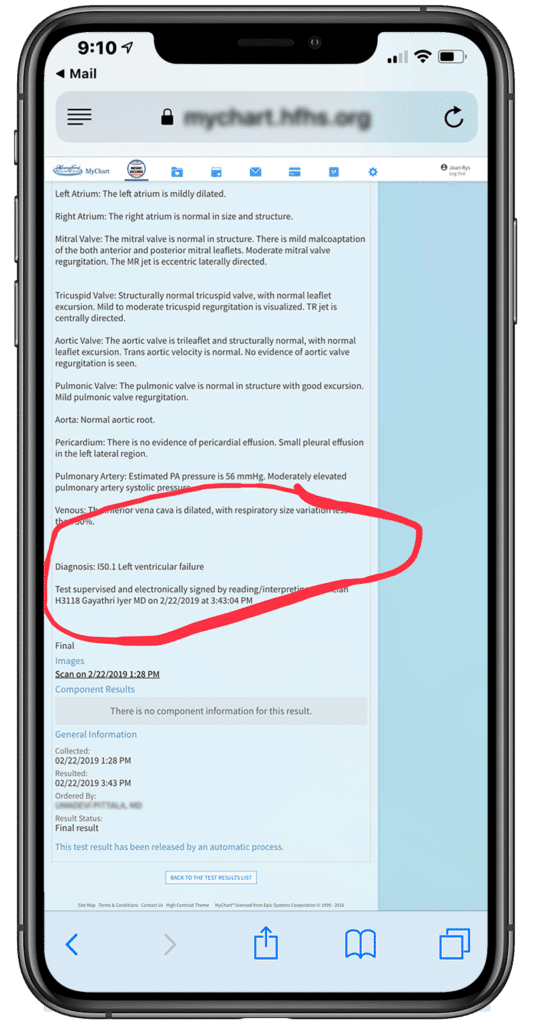
Website visitors will not stay on your website if they can not navigate the site effectively.
The amount of time a visitor stays on your webpage is a ranking factor with Google’s search algorithm for a given search query. The amount of a visitor’s time on a site is known as “dwell time.”
Visitors spend more time on responsive webpages because the sites are easier to read and navigate. Ease of reading and navigation improves the user experience (UX).
Google is in business to satisfy search visitor’s queries. The better user experience (UX) will lead to an increase in conversions and repeat visitors to your website.
Google will reward responsively designed sites that create an excellent user experience.
The positive customer experience will create positive reviews, an increase in branded Google searches, and traffic to your website. These are all factors in organic search algorithms.
In summary, increasing user experience through responsive design will be rewarded with higher search rankings inside Google.
Responsive Design is A Ranking Factor in Google Search Engine Results
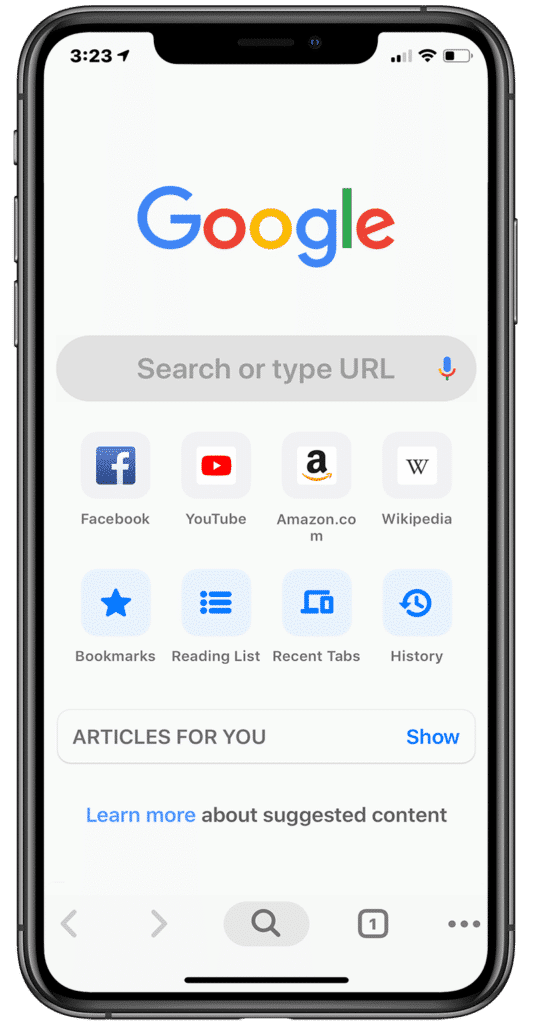
Google announced that it would be adding mobile-friendly signals as a ranking factor in mobile search result listings.
So, what are mobile-friendly signals? Well, it’s not a cheeky grin from an iPhone or a thumbs-up from a Samsung Nexus. It’s a responsive website design.
Mobile web browsing has overtaken desktop browsing as the first choice for internet users.
When Google crawls a website, GoogleBot looks for indicators that a website is not utilizing older code that slows down the mobile experience. GoogleBot favors websites that provide readable textual content without the need to zoom, pinch, or squeeze.
It’s about guaranteeing website content that adjusts to suit the scale of the mobile display screen – responsive website design.
The user experience of a website is immensely vital, as the ability to tap on the right hyperlinks is an essential indicator of a mobile-friendly website.
Google favors websites that are for mobile devices that have incorporated a mobile responsive design.
Responsive Design and Bounce Rates
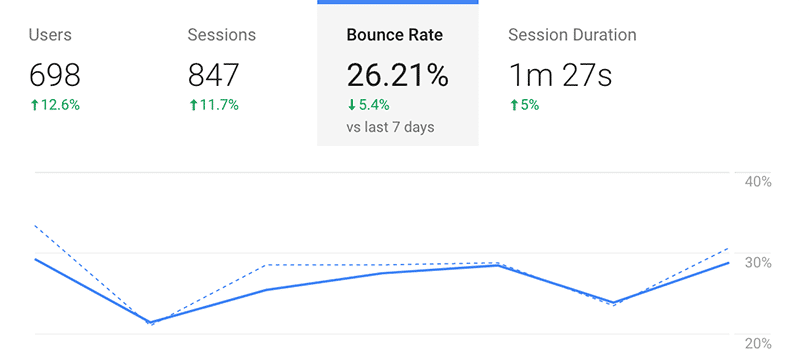
Bounce rate is the percentage of website visitors, from search listings, that DO NOT navigate to another page on your website.
Even more, especially if the visitor hits the ‘Back’ button landing back on the search engine results page (SERP).
User behavior is measured upon where a visitor enters, the URL, a website, and where, the URL, they exit a site.
When a visitor doesn’t find what’s relevant to their search query, they will leave your website quickly. This results in a negative experience in Google’s search algorithm resulting in a reduced ranking.
Web design plays another critical factor with bounce rates.
If your content is excellent, but if the design lacks a good user experience, the search visitor will leave the site.
Mobile responsive design allows for the creation of great content and provides a great user experience for visitors to consume relevant content.
Responsive Design Improves Page Load Time
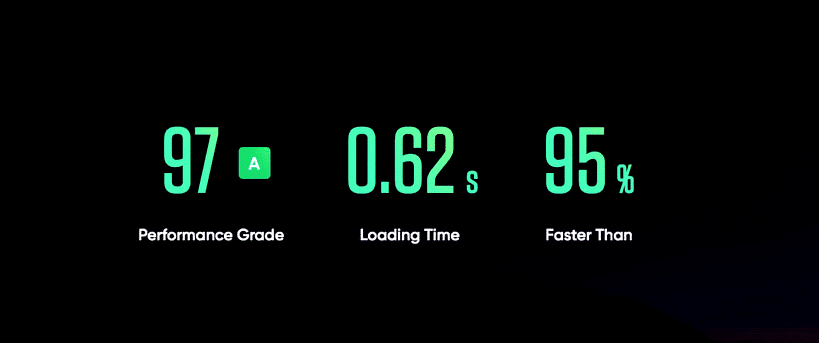
Inside the Google search algorithm, the amount of time a webpage takes to load is a critical ranking factor in search.
Websites need to be optimized to load quickly, building the opportunity to rank well in Google search engine results pages (SERP).
To ensure positive user experience for Google’s search visitors, a website that loads pages quickly receives better ranking.
Google recommends using responsive website design. A responsively designed site loads faster, providing a positive user experience and higher search rankings for your business.
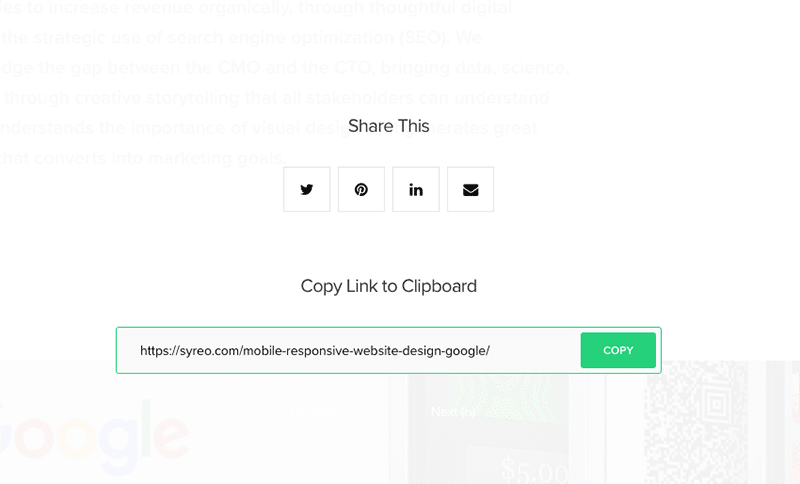
Social sharing is much easier, with responsive web design, with the majority of users web surfing on mobile devices.
Social sharing does not have an impact on search ranking, however, it can create new visitors to your website content.
More traffic and engagement will build your brand’s search presence with Google.
A non-responsive website will result in poor user experience with mobile users trying to navigate poor social sharing buttons not designed for mobile devices.
Less Duplicate Content with Responsive Design
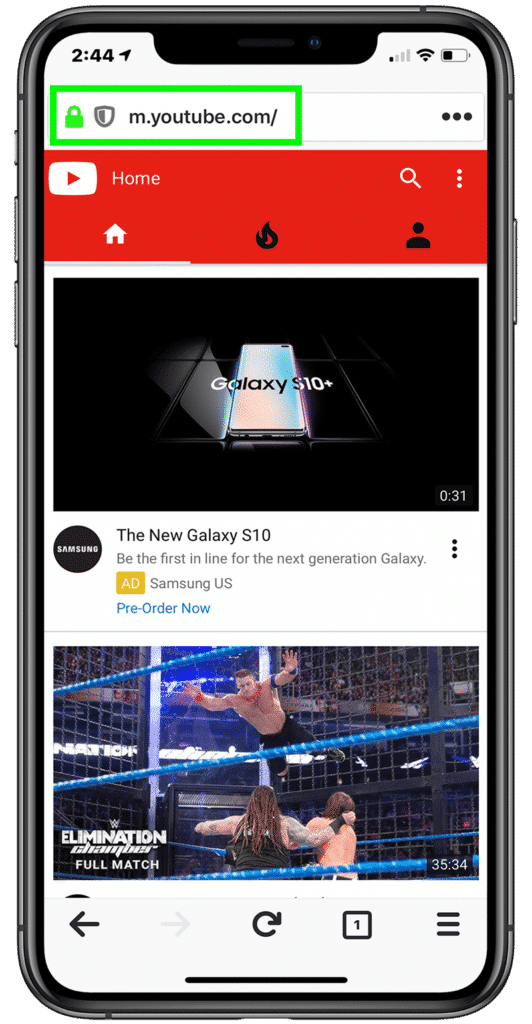
The original method of creating mobile websites was to create the mobile version on a subdomain of the original domain – subdomain.example.com.
The problem with this site structure was the simple fact that these are two separate websites and the creation of duplicate content.
Google penalizes websites that maintain duplicate content. Google prefers canonical URLs that ‘point’ to the original content URL – example.com.
The content is the same, but there are different URLs, penalizing your search rankings.
Responsive website design eliminates the problem of multiple URLs by writing a single URL being utilized by various mobile devices.
Responsive Design Helps Boost Backlinks
Link building, or backlinks, is one of the most important aspects of a successful SEO strategy with Google search.
Backlinks from credible and authoritative websites boost the visibility of your website with Google search and create more traffic to your site.
Think of a backlink, to your website, as a vote of confidence to your content. Your website will award a higher search ranking with Google.
With responsive website design, a link to your home page is the same link used for both desktop, tablet, and mobile devices – example.com.
Responsive design eliminates the problem of multiple URLs, ensuring that a single URL backlink will direct to all device sizes, rather than multiple links from a subdomain.
Conclusion
Responsive website design confines to the same content on desktop and mobile versions. The design may limit your options to user experience. However, this strategy will work in most cases.
Mobile users, almost always, want the same content as desktop users. However, they are searching Google on small screens with their fingers and not on a large screen with a mouse.
User experience is critical. Go with a responsive website design!
Image: Apple
If you are interested in talking to us about a new digital project,
please send us a message or call us direct at (248) 974-8866.
About Syreo
Syreo is an SEO Consultant based in Detroit, Michigan. Syreo’s search engine optimization | SEO experts work with Fortune 500 businesses throughout the United States including Detroit and New York City. Syreo consults companies to increase revenue organically, through thoughtful digital marketing tactics and the expert use of search engine optimization | SEO. Syreo understands how to bridge the gap between the CMO (Chief Marketing Officer) and the CIO (Chief Information Officer), bringing data, science, and technology to life through creative storytelling that all stakeholders can understand and embrace. Syreo understands the importance of visual design that generates great user experience (UX) that converts into marketing goals through web analytics.


Responsive Increases Social Sharing via Mobile Users